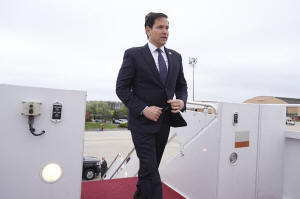|
European allies and Canada are deeply concerned by President
Donald Trump’s readiness to draw closer to Russian leader
Vladimir Putin, who sees NATO as a threat, as the U.S. works to
broker a ceasefire in Ukraine.
Recent White House comments and insults directed at NATO allies
Canada and Denmark — as well as the military alliance itself —
have raised alarm and confusion, especially with new U.S.
tariffs targeting U.S. friends and foes alike.
Since Defense Secretary Pete Hegseth warned last month that U.S.
security priorities lie elsewhere — in Asia and on the U.S.'s
own borders — the Europeans have waited to learn how big a
military drawdown in Europe could be and how fast it may happen.
In Europe and Canada, governments are working on “burden
shifting” plans to take over more of the load, while trying to
ensure that no security vacuum is created if U.S. troops and
equipment are withdrawn from the continent.
These allies are keen to hear from Rubio what the Trump
administration’s intentions are and hope to secure some kind of
roadmap that lays out what will happen next and when, so they
can synchronize planning and use European forces to plug any
gaps.
In a statement, newly confirmed U.S. ambassador to NATO Matt
Whitaker said that “under President Trump’s leadership, NATO
will be stronger and more effective than ever before, and I
believe that a robust NATO can continue to serve as a bedrock of
peace and prosperity.”
But he added: “NATO’s vitality rests on every ally doing their
fair share.”
Whitaker affirmed the U.S. commitment to NATO’s collective
security guarantee, which says that an attack on any ally must
be considered an attack on them all, but that his brief would
also be to encourage Europe to lead on “peace, security, and the
rebuilding of Ukraine.”
The statement said allies should demonstrate that NATO takes
seriously threats from China.
All contents © copyright 2025 Associated Press. All rights
reserved |
|




